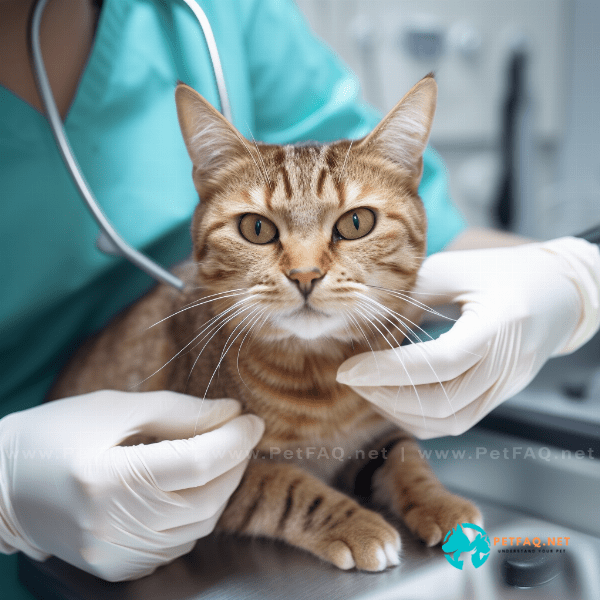Table of Contents
- Understanding Feline Periodontal Disease
- Causes of Feline Periodontal Disease
- Symptoms and Signs of Feline Periodontal Disease
- The Importance of Early Diagnosis and Treatment
- Treatment Options for Feline Periodontal Disease
- Preventing Feline Periodontal Disease
- Home Care for Cats with Periodontal Disease
- The Role of Nutrition in Maintaining Oral Health
- Dental Care and Regular Checkups for Cats
- Living with a Cat with Periodontal Disease: Tips and Tricks
Understanding Feline Periodontal Disease
Feline periodontal disease is a common condition in cats that affects the tissues surrounding and supporting the teeth. This disease is caused by the accumulation of plaque and bacteria in the mouth, which can lead to inflammation and damage to the gums, teeth, and bones that hold the teeth in place.
How Does Periodontal Disease Develop in Cats?
Periodontal disease in cats usually starts with the formation of plaque on the teeth. If the plaque is not removed through regular brushing and cleaning, it can harden into tartar, which can only be removed by a professional dental cleaning. As the tartar accumulates on the teeth, it creates a rough surface where more bacteria can grow and thrive. The bacteria can then spread to the gums, causing inflammation and infection.
Risk Factors for Feline Periodontal Disease
Certain factors can increase the risk of a cat developing periodontal disease. These include age, breed, diet, and overall health. For example, older cats are more susceptible to periodontal disease due to a weaker immune system and the accumulation of years of plaque and tartar. Additionally, some breeds are more prone to dental issues, such as Siamese and Persian cats. A diet high in carbohydrates and low in nutrients can also contribute to dental problems.
How is Periodontal Disease Diagnosed in Cats?
Diagnosing periodontal disease in cats requires a thorough dental exam by a veterinarian. The vet will examine the teeth, gums, and mouth for signs of inflammation, bleeding, and damage. They may also take x-rays to evaluate the condition of the teeth and bones. If periodontal disease is present, the vet will assign a stage to the disease based on the severity of the damage.
Overall, understanding feline periodontal disease is important for pet owners to maintain the oral health of their cats. Early detection and treatment can prevent further damage and improve the overall health and wellbeing of the cat.
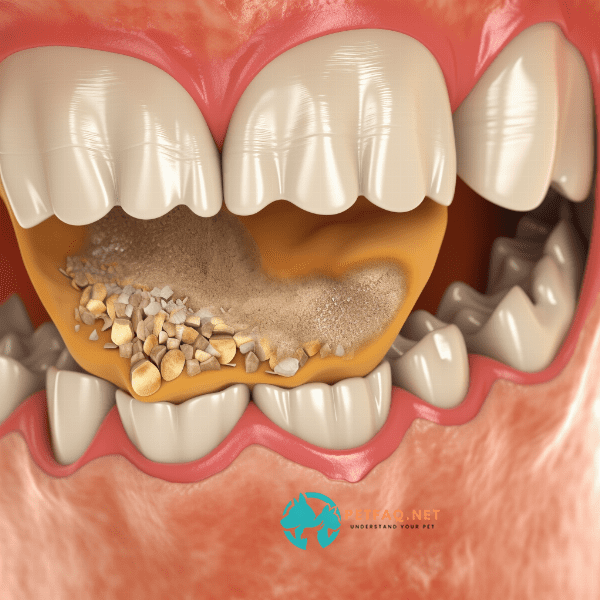
Causes of Feline Periodontal Disease
Feline periodontal disease can have various causes, but the primary cause is the buildup of plaque and tartar on the teeth. The plaque is a sticky film that forms on the teeth and contains bacteria that can cause inflammation and infection in the gums. As the plaque hardens into tartar, it provides a rough surface for even more bacteria to grow, leading to further damage.
Poor Oral Hygiene
One of the most common causes of periodontal disease in cats is poor oral hygiene. Without regular brushing and cleaning, plaque can accumulate on the teeth, which can lead to the development of tartar and eventually periodontal disease. In addition, cats who are fed a diet high in carbohydrates and low in nutrients are more likely to develop dental problems, as their food can contribute to the formation of plaque.
Age and Genetics
Age and genetics can also play a role in the development of periodontal disease in cats. As cats age, their immune system may weaken, making them more susceptible to infection and inflammation in the gums. Additionally, certain breeds of cats may be more prone to dental issues, such as Persians and Siamese cats.
Other Health Issues
Other health issues can also contribute to the development of periodontal disease in cats. For example, cats with diabetes or feline leukemia virus may be more susceptible to dental problems. Additionally, cats with kidney disease may have an increased risk of developing periodontal disease due to changes in their immune system and metabolism.
In conclusion, there are several causes of feline periodontal disease, with poor oral hygiene and age being the most common factors. It is important for cat owners to practice good dental care and take their cat for regular check-ups to prevent the development of periodontal disease.
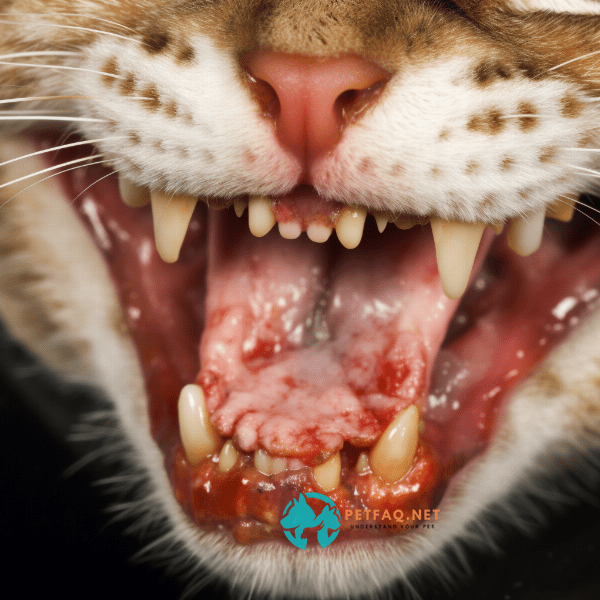
Symptoms and Signs of Feline Periodontal Disease
Periodontal disease in cats can be difficult to detect in its early stages, but there are some symptoms and signs that pet owners can look out for. These include:
Bad Breath
Bad breath, or halitosis, is a common symptom of periodontal disease in cats. The odor is caused by the accumulation of bacteria in the mouth and can be quite noticeable, even from a distance.
Difficulty Eating
Cats with periodontal disease may experience pain and discomfort while eating, which can lead to a decrease in appetite and weight loss. They may also drop food from their mouth while eating or chew on one side of their mouth.
Excessive Drooling
Excessive drooling can be a sign of periodontal disease, as the cat’s mouth produces more saliva to help wash away bacteria and food particles.
Red, Swollen or Bleeding Gums
Inflammation and bleeding in the gums are common signs of periodontal disease in cats. The gums may also appear red and swollen.
Loose or Missing Teeth
As periodontal disease progresses, the teeth may become loose or even fall out. This is because the disease can damage the bones that support the teeth.
It is important for cat owners to pay attention to these symptoms and signs and take their cat for a dental check-up if they notice any of these changes. Early detection and treatment can help prevent further damage and improve the cat’s oral health and overall well-being.
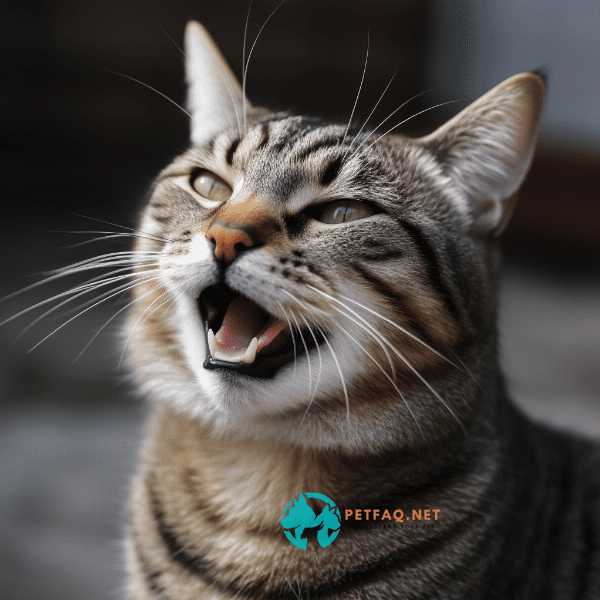
The Importance of Early Diagnosis and Treatment
Early diagnosis and treatment of periodontal disease in cats is crucial to prevent further damage and improve the cat’s overall health. Delayed or neglected treatment can lead to more serious problems, such as tooth loss, gum infection, and even systemic infections.
Prevention of Further Damage
Periodontal disease can cause significant damage to a cat’s teeth and gums if left untreated. Early detection and treatment can help prevent further damage and preserve the cat’s oral health. This can also help prevent the development of more serious health problems, such as heart disease, kidney disease, and diabetes, which have been linked to periodontal disease in cats.
Improved Quality of Life
Untreated periodontal disease can cause pain, discomfort, and difficulty eating for cats. Early diagnosis and treatment can help alleviate these symptoms and improve the cat’s quality of life. This can also help prevent the cat from losing weight, becoming malnourished, and developing other health problems associated with poor dental health.
Lower Treatment Costs
Early diagnosis and treatment of periodontal disease can be less expensive than delayed treatment. Neglected or advanced cases of periodontal disease may require more extensive treatment, such as tooth extractions, antibiotics, or surgery, which can be costly. Regular dental check-ups and cleanings can help prevent the need for more expensive and invasive treatments.
Overall, the importance of early diagnosis and treatment of periodontal disease in cats cannot be overstated. Cat owners should take their cat for regular dental check-ups and pay attention to any signs or symptoms of dental problems to prevent further damage and maintain their cat’s oral health.
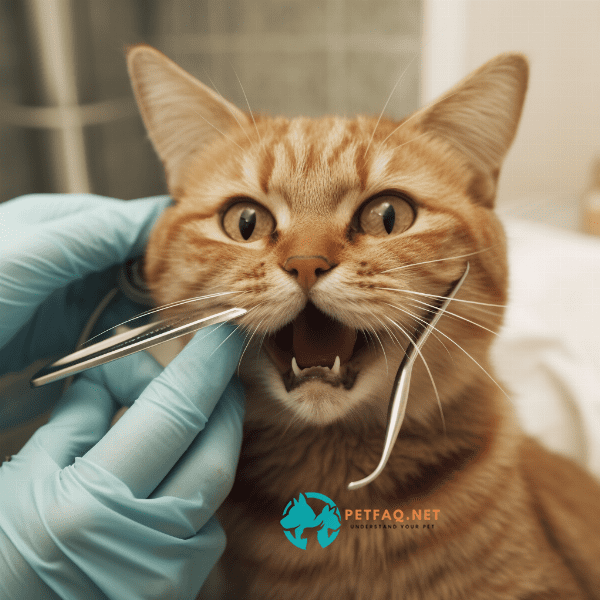
Treatment Options for Feline Periodontal Disease
There are several treatment options available for feline periodontal disease, depending on the severity and stage of the disease. The primary goal of treatment is to eliminate the bacteria and plaque buildup and prevent further damage to the teeth and gums.
Professional Dental Cleaning
A professional dental cleaning, also known as a dental prophylaxis, is the most effective way to remove plaque and tartar from a cat’s teeth. This is typically done under anesthesia to ensure that the cat is comfortable and still during the procedure. During the cleaning, the veterinarian will use special tools to remove plaque and tartar from the teeth and gums. This procedure can help prevent further damage and improve the cat’s overall oral health.
Antibiotics
Antibiotics may be prescribed by a veterinarian to treat any infection caused by periodontal disease. Antibiotics can help reduce the number of bacteria in the mouth and prevent the infection from spreading to other parts of the body.
Pain Management
Cats with periodontal disease may experience pain and discomfort, especially during eating. Pain management medications, such as pain relievers or anti-inflammatories, may be prescribed to help alleviate these symptoms.
Home Care
Home care is an essential part of treating and preventing feline periodontal disease. This can include regular brushing, using dental chews or treats, and feeding a balanced diet that is low in carbohydrates and high in nutrients. Cat owners can also use oral rinses or gels to help reduce bacteria in the mouth and promote healthy gums.
In conclusion, there are several treatment options available for feline periodontal disease, including professional dental cleanings, antibiotics, pain management, and home care. A combination of these treatments may be necessary depending on the severity and stage of the disease. It is important for cat owners to work closely with their veterinarian to develop an individualized treatment plan for their cat.
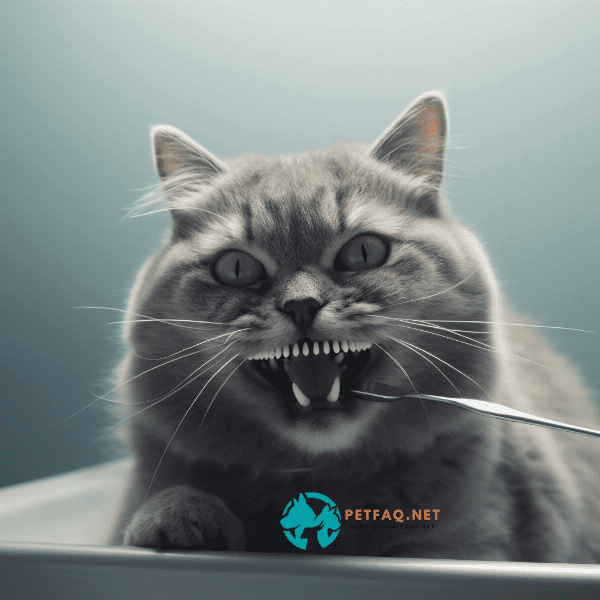
Preventing Feline Periodontal Disease
Preventing periodontal disease in cats is crucial to maintaining their overall health and well-being. There are several steps that cat owners can take to prevent the development of this disease.
Regular Dental Check-ups
Regular dental check-ups are essential for preventing periodontal disease in cats. A veterinarian can detect early signs of dental problems and recommend appropriate treatments. Dental check-ups should be done annually, or more often if the cat has a history of dental issues.
Brushing
Regular brushing is the most effective way to prevent the buildup of plaque and tartar on a cat’s teeth. Cat owners should aim to brush their cat’s teeth at least two to three times a week using a pet-safe toothbrush and toothpaste. This can be done gradually, starting with short brushing sessions and gradually increasing the duration.
Feeding a Balanced Diet
Feeding a balanced diet that is low in carbohydrates and high in nutrients can help prevent the development of periodontal disease in cats. A diet that is high in carbohydrates can contribute to the formation of plaque and increase the risk of dental problems.
Dental Chews and Treats
Dental chews and treats can help prevent the buildup of plaque and tartar on a cat’s teeth. These treats are designed to scrape away plaque and promote healthy gums. Cat owners should choose dental chews and treats that are specifically designed for cats and avoid those that are high in sugar or calories.
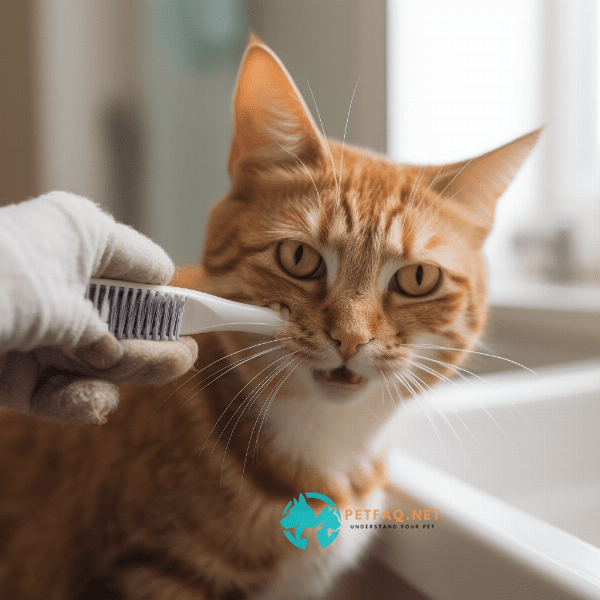
Home Care for Cats with Periodontal Disease
Home care is an essential part of managing periodontal disease in cats. Cat owners can take several steps to help manage the disease and prevent further damage to the teeth and gums.
Diet
A balanced diet is important for cats with periodontal disease. A diet that is low in carbohydrates and high in nutrients can help reduce the formation of plaque and prevent further damage to the teeth and gums. Cat owners should consult with their veterinarian to develop a diet that is appropriate for their cat’s specific needs.
Dental Treats and Chews
Regular Check-ups
Overall, home care is an essential part of managing periodontal disease in cats. Regular brushing, a balanced diet, dental treats and chews, oral rinses and gels, and regular check-ups can all help prevent further damage and maintain the cat’s oral health.
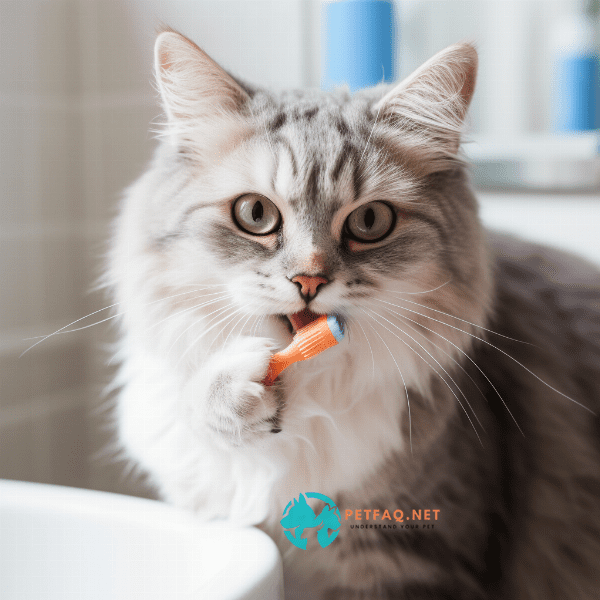
The Role of Nutrition in Maintaining Oral Health
Nutrition plays a vital role in maintaining oral health in cats. A balanced diet can help prevent the development of periodontal disease and other dental problems. Here are some ways in which nutrition can impact oral health in cats:
Dental-Friendly Nutrients
Certain nutrients can help promote healthy teeth and gums in cats. For example, vitamin C can help prevent the breakdown of collagen in the gums, while vitamin D can help the body absorb calcium, which is important for strong teeth and bones. Minerals such as calcium, phosphorus, and magnesium are also important for maintaining oral health in cats.
Dry Food vs. Wet Food
The type of food that a cat eats can also impact their oral health. Dry food can help scrape away plaque and tartar from the teeth, while wet food can stick to the teeth and promote the growth of bacteria. However, it is important to note that some cats may prefer wet food, and it is essential to consult with a veterinarian to develop a diet that is appropriate for the cat’s specific needs.
Carbohydrates
Carbohydrates can contribute to the development of plaque and tartar in a cat’s mouth. A diet that is high in carbohydrates can increase the risk of dental problems and periodontal disease. Cat owners should choose a diet that is low in carbohydrates and high in protein and nutrients.
Dental Diets
Dental diets are specially formulated to promote healthy teeth and gums in cats. These diets may contain ingredients such as enzymes, minerals, and fibers that can help reduce the formation of plaque and tartar. Dental diets can be an effective way to prevent the development of periodontal disease and other dental problems in cats.
In conclusion, nutrition plays an essential role in maintaining oral health in cats. A balanced diet that is rich in dental-friendly nutrients, low in carbohydrates, and appropriate for the cat’s specific needs can help prevent the development of periodontal disease and other dental problems. Cat owners should consult with their veterinarian to develop a diet that is appropriate for their cat’s specific needs and to ensure that their cat is getting the necessary nutrients for optimal oral health.

Dental Care and Regular Checkups for Cats
Regular dental care and check-ups are essential for maintaining optimal oral health in cats. Here are some important considerations for cat owners when it comes to dental care and check-ups:
Dental Care at Home
Regular brushing is the most effective way to prevent the buildup of plaque and tartar on a cat’s teeth. Cat owners should aim to brush their cat’s teeth daily, or as recommended by their veterinarian. A soft-bristled toothbrush and pet-safe toothpaste should be used, and brushing should be done in a gentle circular motion. In addition to brushing, cat owners can also use dental chews, oral rinses, and gels to promote healthy teeth and gums.
Professional Dental Cleanings
Signs of Dental Problems
Cat owners should be aware of the signs and symptoms of dental problems in cats. These can include bad breath, difficulty eating, drooling, bleeding gums, loose teeth, and pawing at the mouth. If any of these symptoms are present, the cat should be taken to a veterinarian for evaluation.
In conclusion, dental care and regular check-ups are essential for maintaining optimal oral health in cats. Regular brushing, dental chews and treats, oral rinses and gels, and professional dental cleanings can all help promote healthy teeth and gums. Cat owners should work closely with their veterinarian to develop a dental care plan that is appropriate for their cat’s specific needs.
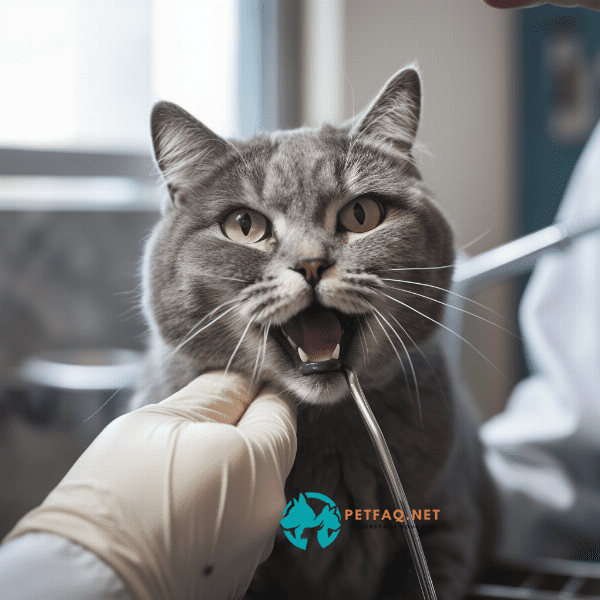
Living with a Cat with Periodontal Disease: Tips and Tricks
Living with a cat with periodontal disease can be challenging, but there are several tips and tricks that can make it easier for both the cat and the owner. Here are some important considerations for cat owners when living with a cat with periodontal disease:
Be Patient
Cats with periodontal disease may experience pain and discomfort, especially during eating. It is essential to be patient with the cat and provide them with the time they need to eat and adjust to their new diet.
Soft Foods
Soft foods can be easier for cats with periodontal disease to eat. Wet food, canned food, or even baby food can be helpful in making mealtime easier for the cat. Cat owners should consult with their veterinarian to determine the best type of food for their cat.
Water Availability
It is essential to ensure that the cat has access to plenty of fresh water. This can help keep the cat hydrated and promote healthy kidneys.
Medications
Cat owners should follow their veterinarian’s instructions regarding medications for their cat’s periodontal disease. It is essential to administer medications as directed and to monitor the cat for any adverse reactions.
Regular Check-ups
In conclusion, living with a cat with periodontal disease can be challenging, but there are several tips and tricks that can make it easier for both the cat and the owner. Being patient, feeding soft foods, providing plenty of fresh water, regular brushing, following medication instructions, and regular check-ups are all important considerations for cat owners. By taking these steps, cat owners can help maintain their cat’s oral health and improve their overall quality of life.
Frequently Asked Questions (FAQs) about periodontal disease in cats:
1. How often should cats have their teeth cleaned to prevent periodontal disease?2. Offer dental chews or toys: Chew toys and dental treats can help promote good oral hygiene and keep your cat's teeth clean.
3. Are there any home remedies or natural treatments for periodontal disease in cats?
4. How often should cats have dental cleanings, and what can owners do at home to help prevent periodontal disease?
5. Can periodontal disease in cats affect other parts of their body?

